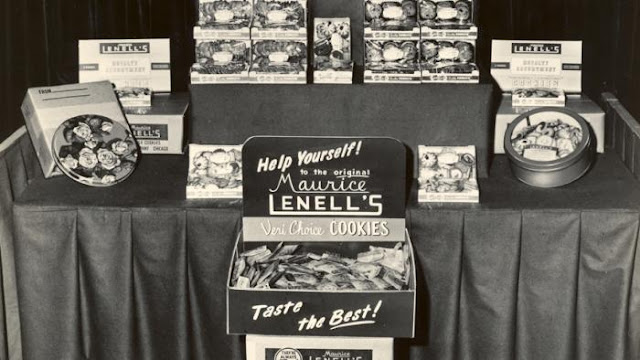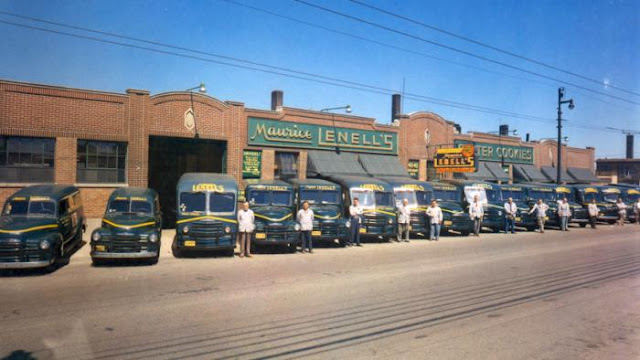Mrs. Jeanette (Pigsley) Mitchell was born in Jefferson county, N.Y. near Sackett’s harbor, March 22, 1832, and is the second daughter of Welcome and Thirza Pigsley, who settled on the place (south of Canton, Illinois) where Calvin Fluke now lives, in 1836.
"We drove through from New York to Lake Michigan," said Mrs. Mitchell "and crossed the lake on a schooner. From Chicago we came overland to Fulton county, Illinois. When we reached Fulton county we stopped with settlers who had preceded us to the land which was said to ‘flow with milk and honey,’ until our cabin was erected. Calvin Fluke now owns the old Pigsley homestead and the cabin stood near the site of Mr. Fluke’s residence."
"The first thing after a new settler arrived was to find a suitable location and to set about building a cabin. Our cabin was a crude structure with one room. Trees of uniform size were selected for the new cabin, the logs were cut the desired length, each end being ‘saddled,’ or notched, so as to bring them as near together as possible. The cracks were ‘chinked’ or ‘daubed’ to keep the wind from whistling through. This ‘daubing’ had to be renewed every fall before cold weather set in. The building was covered with clapboards held in place by weight poles. A wide fireplace was cut out of one end of the cabin and the mud-and-stick chimney was built on the outside. A doorway was also cut through one of the walls and the door was made of spliced clapboards and hung on wooden hinges. This was opened by pulling a leather latchstring. The latchstring was always ‘hanging out’ as a welcome to all. The fireplace was large and would hold enough wood to supply an ordinary stove a week. Beds, splint-bottomed chairs, a pine table, a rude cupboard, and a large and small spinning wheel and few other articles constituted the furniture of the cabin homes of the early settlers of Fulton county. On either side of the big fireplace were poles and kettles and over all a mantle on which was placed a tallow dip. The mantle was sort of ‘Catch-all’ for the family and was generally loaded. To witness the various processes of cooking in those days would alike surprise and amuse those who have grown up since cooking stoves and ranges came into use. Kettles were hung over the large fire suspended on trammels which were held by strong poles. A long handled pan was used for cooking meat. It was held on the fire by hand. This pan was also used for baking shortcake. The best thing for baking bread was the flat bottomed bake kettle, with a closely fitting lid and commonly known as a ‘dutch oven.’ With hot coals over and under it bread will bake quickly and nicely."
"The loom was not less necessary than the wheel. Not every cabin however, in which spinning was done, had a loom. But there were always some in each settlement who, besides doing their own weaving did some for others. Nearly all the clothes worn by men and women were home made. We had no ‘boughten’ clothes in the earlier days of the county. Wheat bread did not become a common article of food for some years after we came to the county. Among the more general forms of amusements were the quilting bee, wool picking, log-rolling, house-raising, and later the apple and peach paring. There used to be plenty of apples and peaches, too, in Fulton county."
"Father had six girls, and only one boy, and much depended on us girls in assisting to clear his land and carry on his farming. Father was a farmer, teacher and preacher, and also did the shoemaking for the family. We girls helped to improve the old homestead and did much of the outdoor work. We lived there for 22 years, or until 1858, when the family moved to St. Augustine in Knox county, where both father and mother spent the remainder of their lives. Father died in 1874 and mother in 1879, ages respectively 77 and 73 years. Their remains are interred in the St. Augustine cemetery. Father was a member of the Missionary Baptist church and Mother belonged to the Freewill Baptist church. There are only four children of the Pigsley family now living. Mrs. Deborah Owens, residing in Arkansas; P. W. Pigsley, a resident of Cass county, Iowa; Mrs. Rebecca Ricketts, living in Sedalia, Mo., and myself."
"Both my father and Father Mitchell were bitterly opposed to secret organizations. I omitted to mention that we moved to Woodford county in 1848, lived there five years, and then moved back on the old Fulton county homestead. Mother used to earn $1 a day weaving. I have seen many a pack of wolves running across their field. They killed a pet lamb once, belonging to my sister Lavina, and she took a good cry over it. After we had been here awhile we girls had one calico dress for Sunday but we wore homespun gowns for every day and we made our own clothes, too. The country was thinly settled, our circumstances were limited, we were compelled to work early and late for our sustenance."
"I was married on the fifteenth day of October, 1848, to Joseph Mitchell, my father, the Rev. Welcome Pigsley, officiating. We have 11 children, all living: Albert C. who married Luella Brooks, lives in Fremont county, Iowa; Nancy M. is the wife of William May, of Joshua township; Mrs. Jennie L. Schafer is a resident of Fremont county, Iowa; Mrs. Thirza M. Haskins is the wife of Frank Haskins, living near Farragut, Iowa; Charles F. married Fanny Hall and their home is in Fremont county, Iowa; G. W. Mitchell married Nettie Bryte and they are residents of Page county, Iowa; Mathew H. resides on the old home place, in Deerfield township; Mrs. Bessie M. Keefauver is the wife of Charles Keefauver and lives on a farm in Joshua township; Mrs. Lula Ollis lives on a farm in Joshua township; Mrs. Addie H. Skinner is at home taking care of us in our old age. Mrs. Adele Spenny, wife of Forest Spenny, is on a farm in Joshua township."
"But I have told you enough for the present. Both Mr. Mitchell and myself have worked long and faithfully, have reared a large family of useful men and women, and thank God they are all living."
Both Mr. and Mrs. Mitchell are getting well along in years and are among the earliest settlers of Fulton county still living. They have grown with its growth and have been no unimportant factor in making it one of the richest counties in the state. For more than 57 years they have permitted to walk life’s road together. They have 11 children, all living, and 35 grandchildren. This worthy couple celebrated their fifty-seventh wedding anniversary on the fifteenth day of last October. Joseph Mitchell is a staunch Republican and still takes quite an interest in political affairs. They both belong to the Baptist church and their membership dates back to pioneer days. With each passing year they have continued to add to the long list of their friends and are today very highly respected and esteemed in the community where the greater portion of their long lives have been spent. Intelligent and moral, they have been very useful citizens in helping build up home enterprises, and have been an influence for much good in social and religious matters.
by Jeannette Mitchell
Canton Weekly Register, January 4, 1906
Wednesday, November 15, 2017
"A Rambler's Notes" published in the Canton Weekly Register, January 4, 1906.
Living History of Illinois and Chicago®
Entertainment,
IL West Central,
News Story
The History of the Maurice Lenell Cooky Company, Chicago-Norridge, Illinois.
"Lenell Cookies," as it was first known, began as a bakery founded in 1925 by Swedish brothers Hans and Gunnar Lenell at 4349 North Avers Avenue in Chicago.
Then the Lenells' joined with friend Agaard Billing in 1937 to start the company, which they changed its name to "Maurice Lenell Cooky Company," the misspelling paying homage to Hans and Gunnar's Swedish heritage. The Harlem Avenue plant at 4474 North Harlem Avenue in Norridge opened in 1956.
"In Chicago, everyone still talks to me about it," says Bocskay. "As a child, people would go there for every holiday to get lots of cookies for all their relatives, but also they would go there because you could see the cookies being made. It's so much a part of people's childhood."
For nearly 50 years, the Lenell family built a name and a loyal following for specialties like Raspberry Jelly Swirls, Almonettes, and my personal favorite, Pinwheels. Maurice Lenell closed its Norridge factory in 2008.
Consolidated Biscuit Co. has been making the cookies since Maurice Lenell filed for bankruptcy in 2008. They bought Lenell's equipment and trademarks and promised to continue making the cookies, told the Tribune the equipment used to make the cookies had aged, and the undertaking became hard to justify. The company also said the Food and Drug Administration, and customers, wanted a revision to the recipe to remove partially hydrogenated oils. But they say that revision "changes the whole cookie." Consolidated Biscuit Co. stopped producing the beloved old-fashioned treats, and all that remains at the Cookie Store is left on the shelves. The company says it ceased production in 2010 because it was too expensive.
The newly formed Hearthside Foods, a Chicago-based baking company, acquired the Maurice Lenell brand in 2010.
"Maurice Lenell is a top-of-mind brand, and it's in the hearts of Chicagoans and part of their past," says Hearthside Vice President of Marketing Roy Jasper. Jasper was tasked with resurrecting Maurice Lenell. "Our job was to figure out how to re-establish that same feeling and emotion in the brand and carry it on," he says. Staying true to the Lenell tradition was imperative for the company's CEO, Rich Scalise, a native Chicagoan who had fond memories of his childhood treat.
The "Cookie Store and More" opened at 3829 North Harlem Avenue in Chicago in 2010 to serve as the unofficial outlet for the Maurice Lenell brand but closed its doors in August 2015.
Compiled by Dr. Neil Gale, Ph.D.
Sources: WTTW, WGN TV, NBC Chicago
Then the Lenells' joined with friend Agaard Billing in 1937 to start the company, which they changed its name to "Maurice Lenell Cooky Company," the misspelling paying homage to Hans and Gunnar's Swedish heritage. The Harlem Avenue plant at 4474 North Harlem Avenue in Norridge opened in 1956.
Maurice Lenell cookies were manufactured and sold in Norridge, primarily out of their Harlem Avenue factory store, "The Cookie Jar."
"His name was Erik Maurice Lenell, and he was the son of Hans Lenell," explains Jill Bocskay, who is Hans Lenell's granddaughter. "Hans started the company with his brother. But his son was actually the company's namesake," she says. "He chose that name because it was kind of an American-sounding name and less like a European or Swedish name. He thought it would be easier for people in the United States.""In Chicago, everyone still talks to me about it," says Bocskay. "As a child, people would go there for every holiday to get lots of cookies for all their relatives, but also they would go there because you could see the cookies being made. It's so much a part of people's childhood."
For nearly 50 years, the Lenell family built a name and a loyal following for specialties like Raspberry Jelly Swirls, Almonettes, and my personal favorite, Pinwheels. Maurice Lenell closed its Norridge factory in 2008.
The Cookie Jar Factory Store, Norridge, Illinois
Consolidated Biscuit Co. has been making the cookies since Maurice Lenell filed for bankruptcy in 2008. They bought Lenell's equipment and trademarks and promised to continue making the cookies, told the Tribune the equipment used to make the cookies had aged, and the undertaking became hard to justify. The company also said the Food and Drug Administration, and customers, wanted a revision to the recipe to remove partially hydrogenated oils. But they say that revision "changes the whole cookie." Consolidated Biscuit Co. stopped producing the beloved old-fashioned treats, and all that remains at the Cookie Store is left on the shelves. The company says it ceased production in 2010 because it was too expensive.
The newly formed Hearthside Foods, a Chicago-based baking company, acquired the Maurice Lenell brand in 2010.
"Maurice Lenell is a top-of-mind brand, and it's in the hearts of Chicagoans and part of their past," says Hearthside Vice President of Marketing Roy Jasper. Jasper was tasked with resurrecting Maurice Lenell. "Our job was to figure out how to re-establish that same feeling and emotion in the brand and carry it on," he says. Staying true to the Lenell tradition was imperative for the company's CEO, Rich Scalise, a native Chicagoan who had fond memories of his childhood treat.
The "Cookie Store and More" opened at 3829 North Harlem Avenue in Chicago in 2010 to serve as the unofficial outlet for the Maurice Lenell brand but closed its doors in August 2015.
Compiled by Dr. Neil Gale, Ph.D.
Sources: WTTW, WGN TV, NBC Chicago
Living History of Illinois and Chicago®
Chicago,
Films - Movies - Videos,
Food & Restaurants,
IL Northeast
Tuesday, November 14, 2017
Lorado Taft's "Ferguson Fountain" aka Fountain of the Great Lakes, at the Art Institute of Chicago.
The Ferguson Fountain, commonly known as the "Fountain of the Great Lakes," depicts five female figures grouped together so that water flows from their shells the same way it passes through the Great Lake system. Superior, at the top, and Michigan empty their water into the basin held by Huron, who sends her stream to Erie. Ontario receives water and gazes off as it flows into the ocean. Completed in 1913, the fountain now sits inside the south wing of the Art Institute of Chicago.
The idea for a Great Lakes fountain came from a remark made by architect Daniel Burnham at the Columbian Exposition in 1893. Burnham chided the sculptors assembled to ornament the fairgrounds for not "making anything" of the tremendous natural resources in the West, especially the Great Lakes.
The Fountain of the Great Lakes is one of the best-known works of Lorado Taft, an Illinois native educated at the University of Illinois and later at the Ecole des Beaux-Arts in Paris.
Compiled by Dr. Neil Gale, Ph.D.
The idea for a Great Lakes fountain came from a remark made by architect Daniel Burnham at the Columbian Exposition in 1893. Burnham chided the sculptors assembled to ornament the fairgrounds for not "making anything" of the tremendous natural resources in the West, especially the Great Lakes.
The Fountain of the Great Lakes is one of the best-known works of Lorado Taft, an Illinois native educated at the University of Illinois and later at the Ecole des Beaux-Arts in Paris.
sidebar
There was some controversy over the female nudity depicted in Lorado Taft's "Ferguson Fountain." The fountain features five allegorical female figures representing the Great Lakes. Three figures have bare upper torsos, which was considered controversial at the time. Some critics argued that the nudity was inappropriate for a public space, while others defended the fountain as a work of art.The controversy over the nudity in "Ferguson Fountain" was part of a larger debate about the role of public art in the early 20th century. In the years leading up to the fountain's dedication, there was a growing movement to censor public art considered too sexually suggestive. This movement was led by groups like the National League of Women Voters, who argued that public art should be uplifting and educational, not titillating.In the end, "Ferguson Fountain" was not censored. However, the controversy over its nudity did highlight the changing standards of public decency in the early 20th century.
Subscribe to:
Comments (Atom)



















